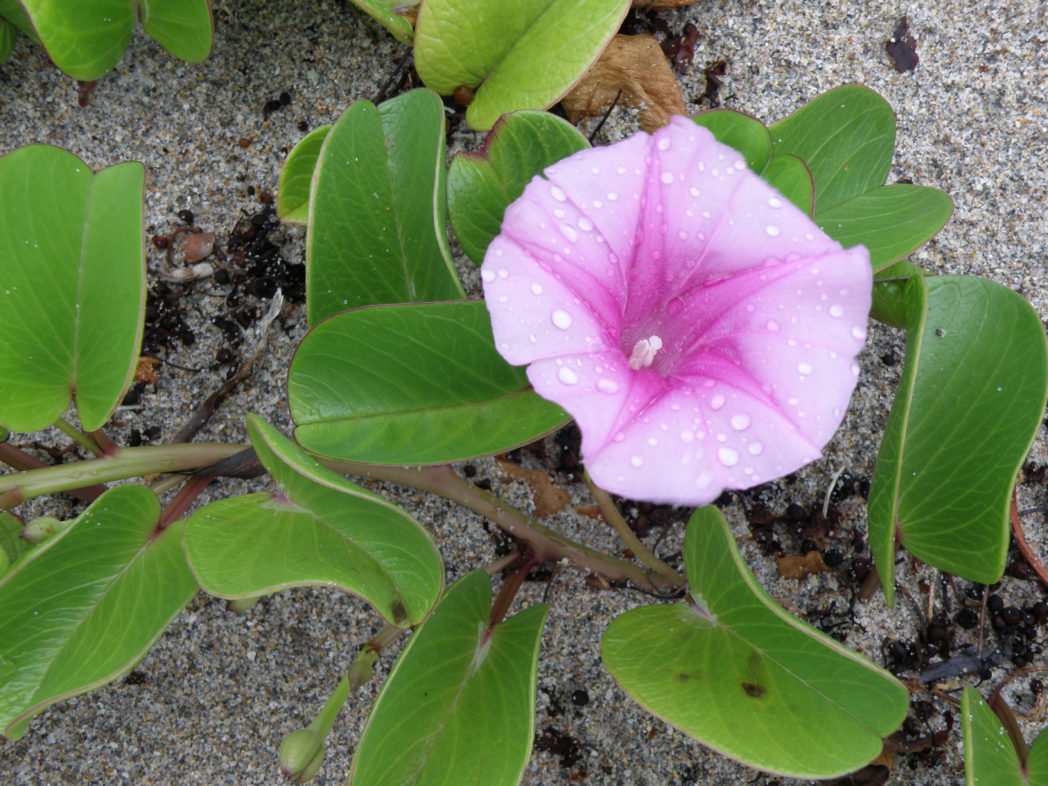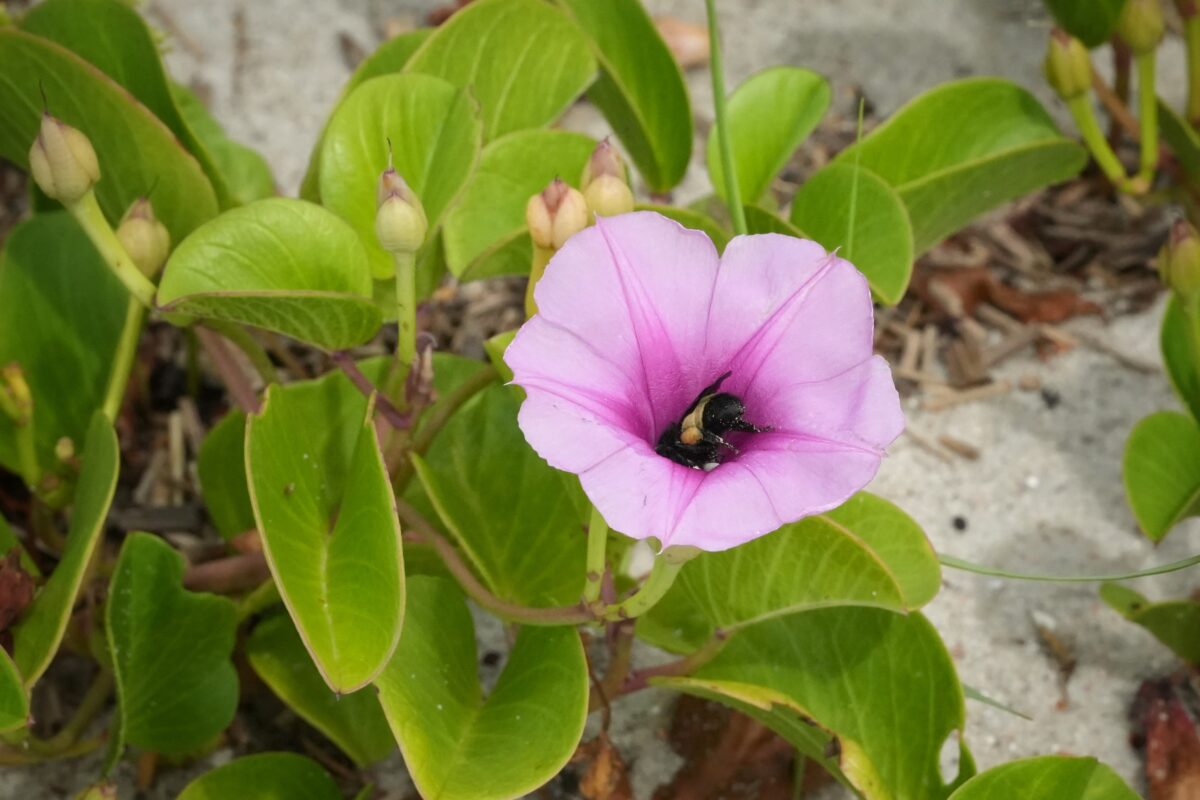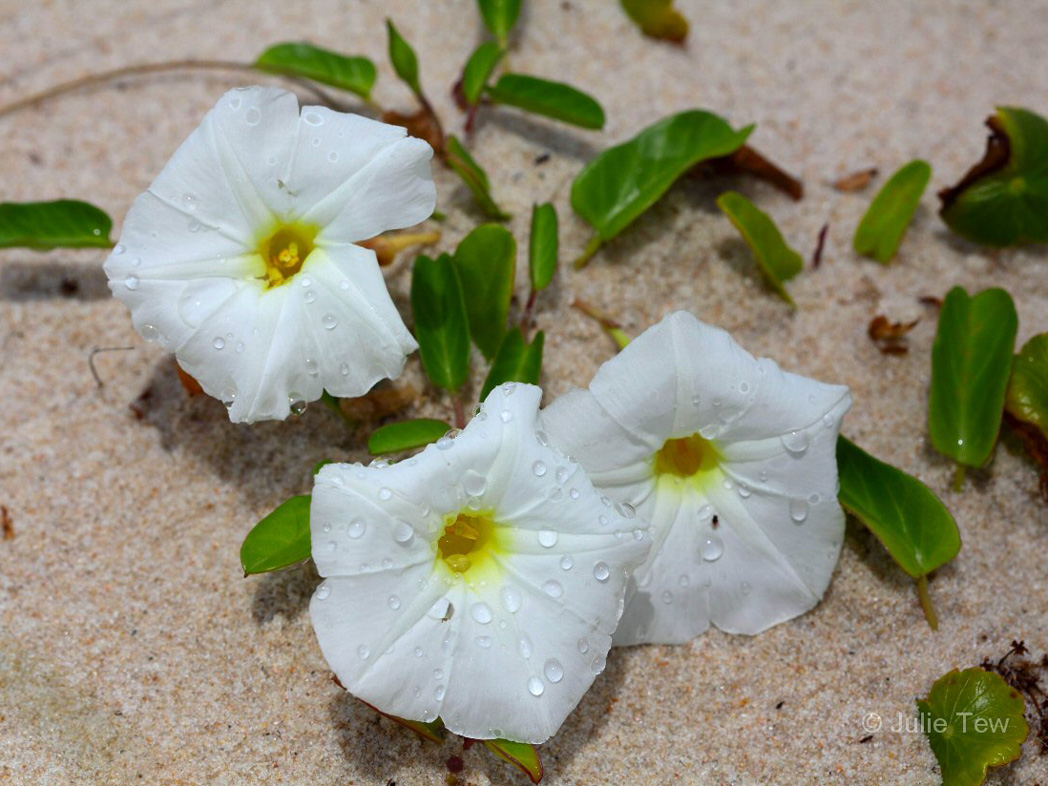Railroad vine
Pictured above: Railroad vine (Ipomoea pes-caprae) by Stacey Matrazzo. Click on terms for botanical definitions. View post as a PDF.
Also known as beach morning glory, bayhops, or goat’s foot, Railroad vine (Ipomoea pes-caprae subsp. brasiliensis) is a fast-growing, evergreen, perennial commonly found on beach dunes. It occurs naturally in most of the coastal peninsular counties, and in a few coastal panhandle counties. It is a pioneer species and is often used in beach restoration and stabilization.
Railroad vine flowers are large, funnel-shaped and purple to purplish-pink in color. Its large nectaries and showy flowers attract bees, butterflies, moths, flies, beetles, wasps and ants. Leaves are succulent and rounded, with a notched tip resembling a cloven hoof, hence its species name, pes caprae, which means “goat’s foot” in Latin.
The leaves and stems contain a white sap that may help protect it from pests. It has also been used to treat jellyfish stings. As with other morning glory species, railroad vine flowers open in the morning and last only one day, however, the plant is a prolific bloomer.
Family: Convolvulaceae (Morning glory family)
Native range: Escambia, Santa Rosa, Okaloosa, Gulf, Franklin, Highlands and most coastal peninsula counties, as well as the Keys
To see where natural populations of Railroad vine have been vouchered, visit florida.plantatlas.usf.edu.
Lifespan: Perennial
Soil: Does best in dry, nutrient-poor, sandy soils
Exposure: Full sun
Growth habit: 6–16” tall; vine length varies from 10-20’, but can extend as long as 100’
Propagation: Seed, cutting
Florida regions of landscape suitability: North, Central, South
Garden tips: Railroad vine is highly tolerant of salt, heat and wind. It can be difficult to cultivate in a typical landscape. It does best on beach dunes.
Railroad vine is sometimes available at nurseries that specialize in native plants. Visit PlantRealFlorida.org to find a native nursery in your area.
Learn more about Railroad vine from the Florida Native Plant Society and the Institute for Regional Conservation.
For information on other Ipomoea species, see these resources:



